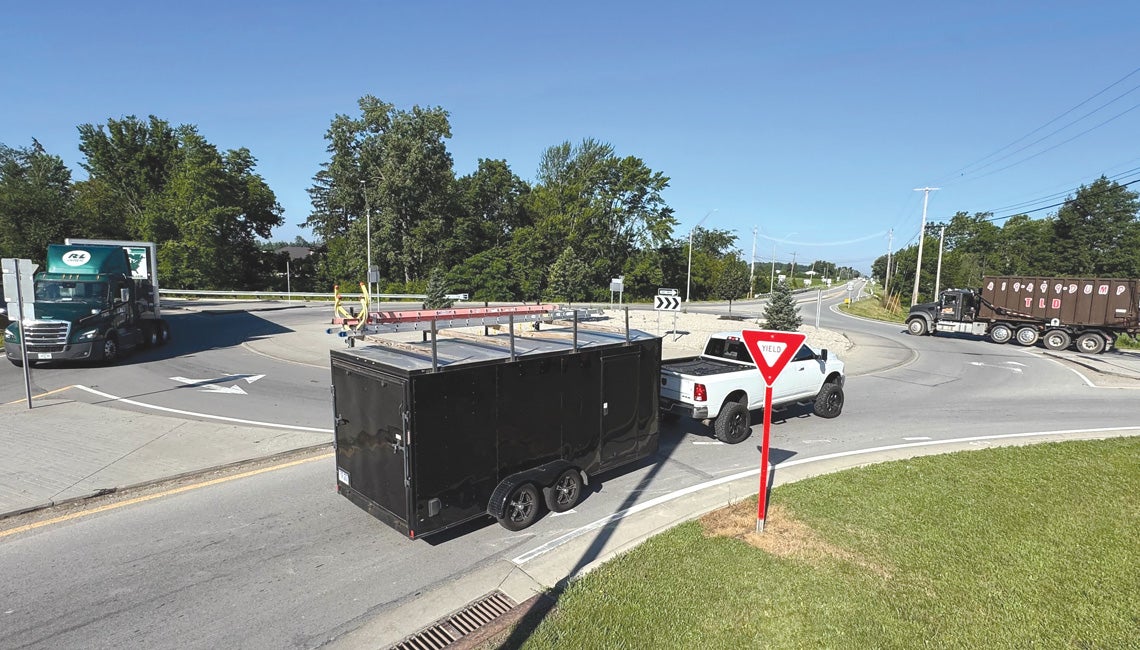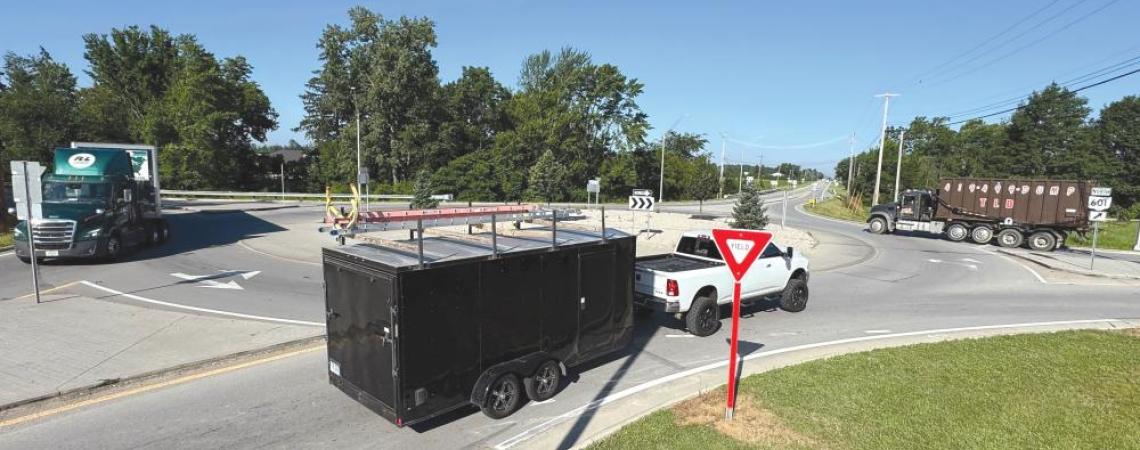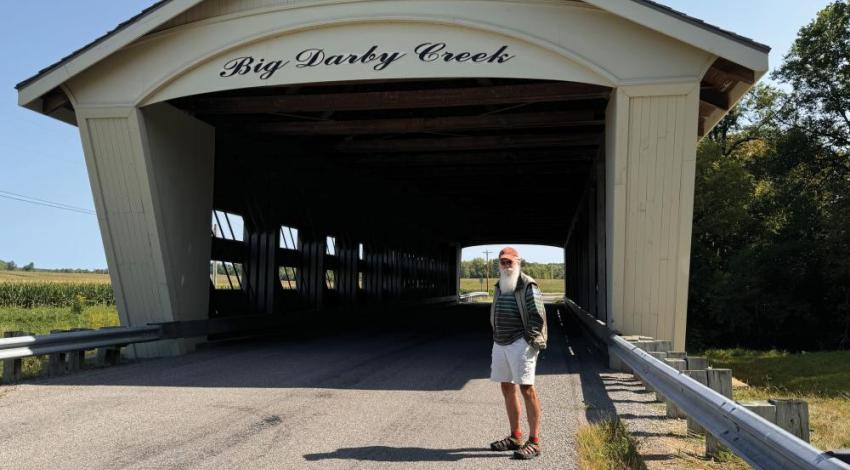Marblehead resident Cathy Bertovich has been driving Ohio roads for more than 50 years, so when she talks about new roundabouts recently constructed in Ottawa County, hers is certainly a voice of experience.
Roundabouts are circles at an intersection of two or more roads, where, instead of being stopped by traffic signals or stop signs, drivers can enter without stopping (though they must yield to traffic already inside the circle) and make their way through the intersection. Studies show they’re both safer and more efficient at moving traffic along.
Bertovich, however, is not a fan. And it’s not because she finds them confusing; it’s more how they seem to affect other drivers. “People just aren’t considerate,” she says.
This roundabout at Ohio 53 and Ohio 2 replaced a traffic signal that sometimes backed up incoming tourist traffic for a quarter mile or more.
Bertovich notes that the approaches to the new Ottawa County roundabouts — at an exit ramp from Ohio Route 2/53 and an adjacent one at the intersection of Route 53 and East State Road — are posted 15 mph, but some drivers speed through, which throws off the rhythm for incoming traffic. “And then sometimes people come to a complete stop when someone’s coming around or even when there’s no traffic coming,” she says. “I’ve seen four or five cars backed up coming off Route 2 where people have stopped at the roundabout when they didn’t need to.”
Generally, Ohio drivers are either firm supporters or total detractors of roundabouts, with not much middle ground. Despite those who dislike the rise of the traffic pattern, they’ve become popular tools for highway planners at both urban and rural intersections during the last decade. According to a national database, there are already more than 400 roundabouts on the state’s roads, with many more in various stages
of planning and construction.
It may come as no surprise that the older drivers are, the less they like roundabouts.
“This is accurate,” says Matt Bruning, a spokesman for the Ohio Department of Transportation. “We’ve found that with any new traffic pattern, people are initially opposed. I don’t know of a roundabout in Ohio where the first reaction wasn’t, ‘Wait for the crashes to skyrocket because people here won’t know how to use them.’”
But he says sentiment changes once drivers get to know the ins and outs of the intersections. “I’ve heard folks who begin opposed to roundabouts now asking for more of them because they see the safety and traffic flow benefits,” he says. “They do exactly what they claim to do: reduce crashes, virtually eliminate serious injury and fatal crashes, and improve traffic flow.”
Count retiree Dennis Jesse, who’s also been driving in Ohio for more than 50 years, as a convert. As a part-time taxicab driver in Port Clinton, Jesse goes through the Ohio 2/53 interchange dozens of times per day.
“I was kind of skeptical about them, but now I like them,” he says. “They really slow traffic down and that’s a good thing. I’ve seen some people stop and then some people seem kind of confused, but most of the people I see go by the rules and it really keeps traffic moving so you don’t have to stop at a light or stop sign. I really wish there were more of them.”
With no stop signs or signals, roundabouts may seem like a free-for-all at first, but there are rules. According to Ohio State Highway Patrol Lt. Shaun Robinson, they’re pretty simple. “You don’t have to stop, but you do have to yield to traffic established in a roundabout,” he says. “And you are required to use your turn signal when exiting.”
Robinson agrees that unneeded stopping can cause problems. “Drivers stop where they’re not supposed to or don’t need to and someone behind them assumes they’re not stopping,” he says. “But that could apply anywhere.”
Whether you like them or not, roundabouts are definitely here to stay. Bruning says though they might not be right for every intersection, no roundabouts in Ohio have been deconstructed. “I can tell you this: They’re becoming more common, and you’ll see them a bunch more everywhere in the state,” Robinson says. “From my perspective they’re absolutely fantastic because they dramatically lower crashes.”
One of the best examples of that is the intersection of Ohio 235 and Ohio 41 in rural Clark County, where there had been two fatal crashes and nine more with serious injuries just between 2009 and 2011. “Officials tried since the 1970s to reduce accidents there,” Bruning says. “That included rumble strips, flashing lights, and a traffic signal, but nothing worked.”
So they decided to try a traffic circle. The $1.1 million project, completed in 2014, was the first roundabout in the area. Bruning says a 2021 ODOT study found a 100 percent reduction in fatal crashes and 88 percent reduction in injury crashes since the roundabout was put in.
“To my knowledge there still hasn’t been a fatal crash there a decade after it was installed,” he says. “I’d say that’s a success story.”










